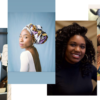Another Fashion Month has come and gone but, luckily, the runways’ remnants are here to rub in all of the “you had to be there” moments most of us regular folk missed. I assume my invitation got lost in the mail yet again, but that’s neither here nor there. As expected, many 2015 trends – vibrant yellow, frayed-hem denim, and off-the-shoulder sass – bled over into this year’s collections. We saw avant-garde embellishing like the “maximalism” at 5:31 Jerome (a term I assume was coined by the designer), and rainbow tweed that has become synonymous
with Lagerfeld’s most recent Chanel collections. While flamboyant ornamentation will never truly die, as it is quite relative to fashion design, relatable, comfort-centric fashion is the newest trend to overtake the mode scene. Revised workwear, block-heel shoes, and loose fitting 70s tops have been revitalized by high-end brands and is the bulk of what you’ll find on the racks at fast-fashion stores. Street style stars have dropped stilettos for flats, and sleek oxfords; skinny jeans are pushed out by medium-flare denim. The era of effortless-chic that we’re experiencing is similar to the peak of the Realism Art movement, is it not? Now, some may consider this a stretch, but there is an interrelationship here. The Realism art movement of the 1850s revolted against exaggeration, a theme associated with Romanticism, which dominated the art scene at the time. Similarly, though to a much lesser degree, fashion insiders and enthusiasts alike, are rejecting the idea that being fashionable means dressing over-the-top. We’re saying “No! We can be comfortable and stylish simultaneously.” Normcore can be pinpointed as the trend that issued in fashion’s realism era a few seasons back and the new emphasis on simplicity presents itself as an extension of that. Both are singularly popular trends, but they have fused, becoming less of a trend and more of a new fashion lifestyle; or dare I say it, a style movement?
This modern accentuation of ease has become closely associated with having superb style, which is a concept many can not only appreciate, but can participate in without much hesitation. Most of us have an affinity for cool button-downs anyway, and who doesn’t love a pair of pumps that won’t require a foot soak after each wear? As Realism in art captures life in a way that is understandable and naturalistic, comfort in fashion encapsulates that which is wearable and personal-style inclusive; where as, avant-garde is blatantly monogamous and rooted in specificity. Couture is mendacious, isolating and understandably so. This is especially true for those who don’t spend every waking moment dissecting mad creativity. Our infatuation with whimsy just may be withering away, though, will never be completely diminished. But, even if you’re not one to keep it too simple, or are reliant on combining ease with quaint flair, realism in fashion still extends to you. For the utopian idealists, this era meets your demands with the sub-trend that combines Romanticism and Realism, like the garbs produced by Ellery, Azede Jean-Pierre, and William Okpo.
After all, the fashion industry can never be too pragmatic. If it did, the industry itself would cease to exist. However, comfort-chic is a leap in the right direction, where we all can take part and be “on trend”. We can all be fashionistas. Sure, this so-called movement is repetitive in a sense, as with every era in fashion (and life, really). But, that doesn’t mean we can’t bask in it. Join me in celebrating a historic moment in fashion (a little dramatic, here?) by shopping the self-proclaimed Realism Era below and while your at it, share your thoughts in a comment. xox
– Sasha-Gay | IG: @quaintrevolt

